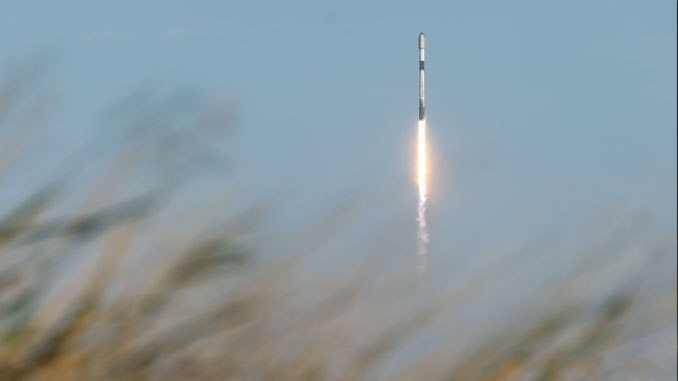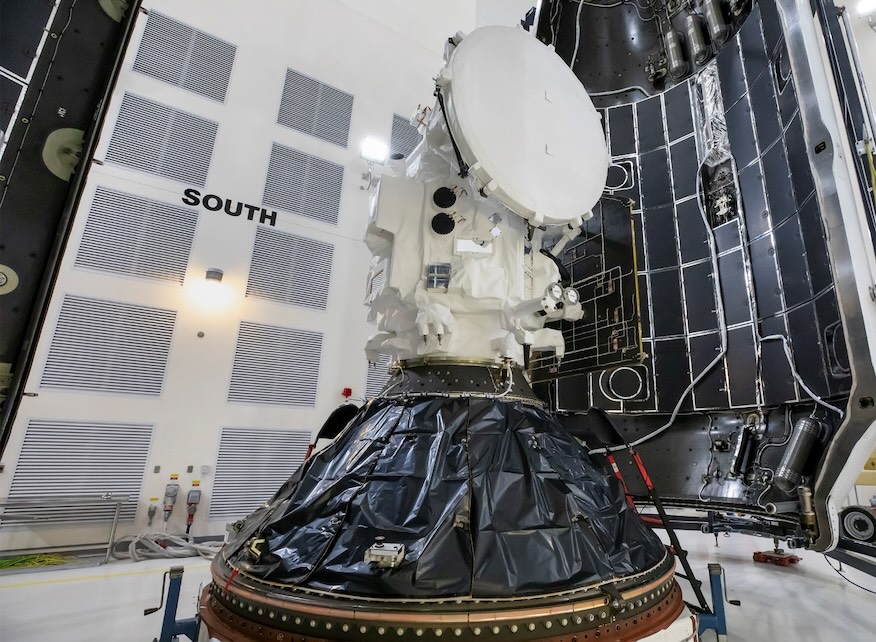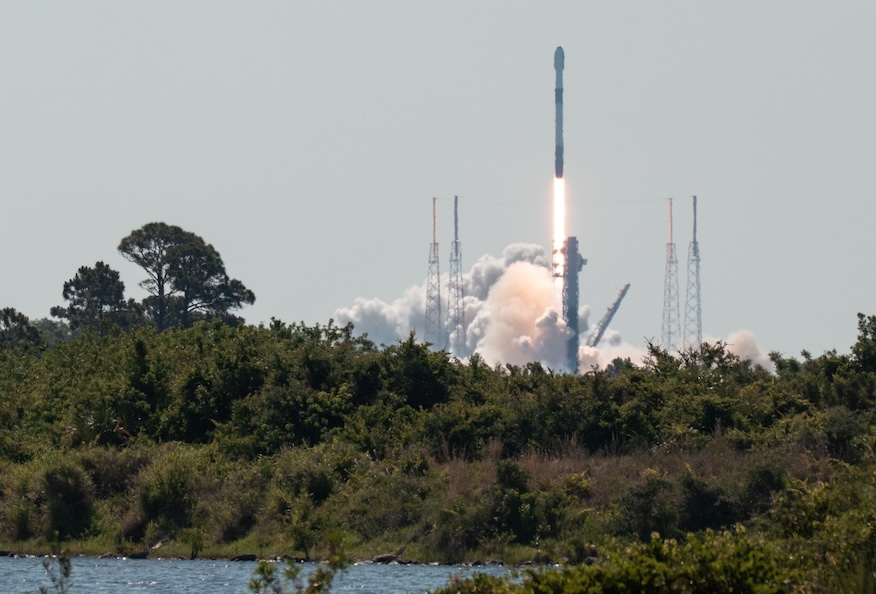Updated 4:47 p.m. EST (2147 UTC): SpaceX landed the first stage booster on its droneship.

SpaceX capped off the Veteran’s Day holiday with the second in a of pair of Falcon 9 rocket launches from Florida’s Space Coast.
Following a Sunday scrub of the Starlink 6-69 mission, SpaceX managed to send up 24 Starlink V2 Mini satellites at 4:28 p.m. EST (2128 UTC) Monday evening. It followed the launch of the Koreasat-6A mission earlier in the afternoon.
This Starlink launch allowed SpaceX to continue testing the limits of its Falcon 9 rocket. The launch of 24 of the V2 Mini variety of the satellite now appears to be the maximum that can flown on a single Falcon 9 launch to this particular shell.
SpaceX has only once before launched 24 of the V2 mini Starlink satellites for the Group 6 shell from Cape Canaveral on Starlink 6-39 in February. After that, subsequent missions maxed out at 23 satellites.
The Falcon 9 first stage booster supporting this mission, tail number B1080 in the SpaceX fleet, launched for a 12th time. It previously supported the launches of four missions to the International Space Station (Ax-2, Ax-3, Cygnus NG-21 and CRS-30), the European Space Agency’s (ESA) Euclid observatory, the SES 24 communications satellite and four prior Starlink missions.
A little more than eight minutes after liftoff, B1080 landed on the SpaceX droneship, ‘A Shortfall of Gravitas.’ This marked the 84th landing on ASOG.
Ramping up launches
The launch of 24 Starlink satellites came as SpaceX looks to ramp up its launch cadence to get as close a possible to the goal it set at the start of the year of 144 missions – a target it admits it can no longer reach. Sunday’s mission will be the company’s third launch in four days and it plans to launch a Korean communications satellite Monday, followed by two more Starlink delivery missions before the end of the week.
Starlink 6-69 was SpaceX’s 108th Falcon 9 rocket launch this year between its two launch pads in Florida and single pad in California.
Following a launch from Vandenberg Space Force Base on Friday at 10:14 p.m. PDT (1:14 a.m. EST, 0614 UTC on Saturday), Kiko Dontchev, SpaceX’s vice president of launch, said that the company was recently approved to launch up to 50 times this year from VSFB.
“Don’t get it twisted… @SpaceX and @SpaceForceDoD are committed to national security AND protecting the environment,” Dontchev said in a post on X, formerly Twitter. “As part of the approval for increased cadence, we are implementing a very robust and detailed species monitoring and mitigation program.
“We will use data and science, not politics, to protect our planet as we push further into the solar system and make life multi-planetary!”
Amazing work by the @SpaceX west coast team on launch #37(!!!) from Vandenberg this year. We are so thankful for our amazing partnership with the @SLDelta30, @SpaceForceDoD, and @DeptofDefense. So much effort from all parties went into clearing the way for increased launch… https://t.co/sZERa6JdAr
— Kiko Dontchev (@TurkeyBeaver) November 9, 2024
Back in mid-October, the Los Angeles Times reported that the California Coastal Commission rejected a request by SpaceX to increase their number of permitted launch to 50. The proposal was also backed by U.S. Space Force and U.S. Air Force officials.
The pushback from commissioners was reportedly connected to the ramped up political activity by SpaceX Founder Elon Musk in the lead up to the presidential election.
“This company is owned by the richest person in the world with direct control of what could be the most expansive communications system in the planet,” Commissioner Mike Wilson said. “Just last week that person was talking about political retribution.”
The commission also said SpaceX needed to do more in the realm of environmental monitoring and mitigation efforts. The L.A. Times reported that military personnel did agree “to increase monitoring and to set up an interagency working group that includes U.S. Fish and Wildlife, the National Marine Fisheries Service and the Federal Aviation Administration to address concerns as the number of launches increases.”
The Times also noted that SpaceX has plans to increase up to 100 launches from California in 2025.



